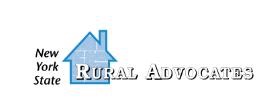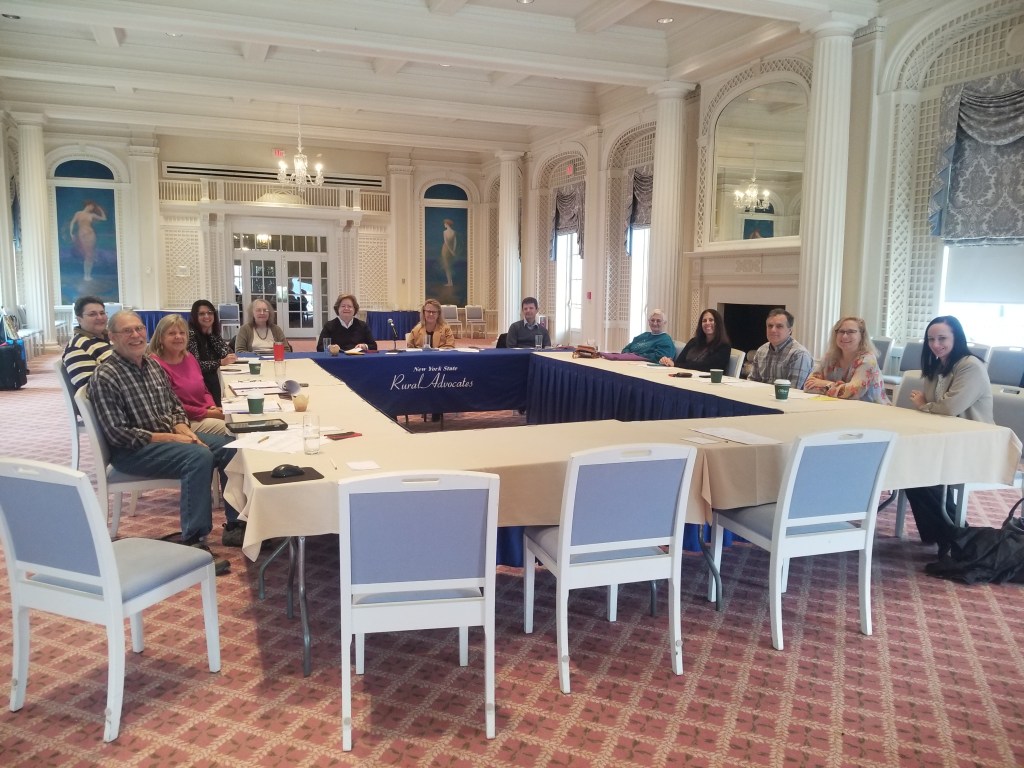Albany New York
May 2, 2023
After New York Governor Kathy Hochul announced a “conceptual” agreement on a $229 billion 2024 State budget late last week, Legislative staff worked through the weekend to put the final touches on the eleven bills that comprise our State Budget. Beginning on Monday of this week, the Legislature has started the process of passing the budget bills in time to avert a fourth budget extender.
For New York State Rural Advocates, the highlight is surely the record 40% increase in funding for the Rural and Neighborhood Preservation Programs. Funded from surplus reserves of the Mortgage Insurance Fund, RPC funding is approved at $7.557 million, an increase of almost $2.2 million. It will be up to leaders of the NYS HCR to determine the exact amount of 2023/24 RPC contracts but Rural Advocates anticipates that awards will be in the neighborhood of $125,000 per group.
Rural Advocates are proud to have led the effort to convince our sometimes-reluctant colleagues to adopt a particularly aggressive budget request this year based on our analysis of the dramatic loss to inflation of RPC spending power over the past twenty years. Rural Advocates argued that the program would need over $7.5 million this year to equal the inflation adjusted funding levels of the early 2000s.
As is customary, the Legislature also amended the executive budget to carve out $250,000 for Rural Housing Coalition and the Neighborhood Preservation Coalition to support their training and technical assistance programs.
Reflecting other Rural Advocates’ priorities, the budget also included significant increases for some of the local administered programs that are used by Advocates’ members. The RESTORE program which provides funding for emergency home repairs on behalf of seniors was increased from the Governor’s proposed $1.4 million to a whopping $8.4 million. Access to Home is to receive a two million dollar increase to $3 million. The budget also includes $7 million in Capital Projects Funds to support another round of HCR’s Small Rental Housing Development Initiative. Rural Advocates were pleased that funding for the important Homeownership Protection Program (HOPP) was restored to $40 million after having been zeroed out in the executive budget. Again this year, HOPP advocates worked very hard and put on an excellent funding campaign.
Among the disappointments is the Legislature’s failure to maintain the increase in funding for the Affordable Housing Corporation’s program that was included in the 2023 budget returning the program to the $26 million that has been in place since 1985. The Legislature did adopt the Governor’s proposed addition of $14.5 million to AHC in order to fund the Legacy Cities Program.
Meanwhile, Governor Hochul’s ambitious Housing Compact and a slew of related proposals fell completely off the table. The Governor had proposed to establish housing production targets for all the State’s municipalities including a mandatory 3% goal for downstate and 1% for upstate communities. The Governor would have created a mechanism to override local zoning in order to allow developers to produce some 800,000 housing units over the next ten years. In response, Legislative leaders discussed a range of incentives rather that the Governor’s mandate but, in the end this budget contains none of her policy proposals.
While the Legislature did not adopt the Executive’s proposed $250 million Infrastructure Support Fund but they did include another $250 million to create a new Housing Access Voucher Program intended to provide rental assistance to households that are homeless or at risk of homelessness. Also added is $135 million for the NYC Housing Authority, a perennial Legislative priority. Other Legislative priorities including Good Cause Eviction appear not to have been included in the adopted budget.
Additional details of the approved budget are found in the table below.




